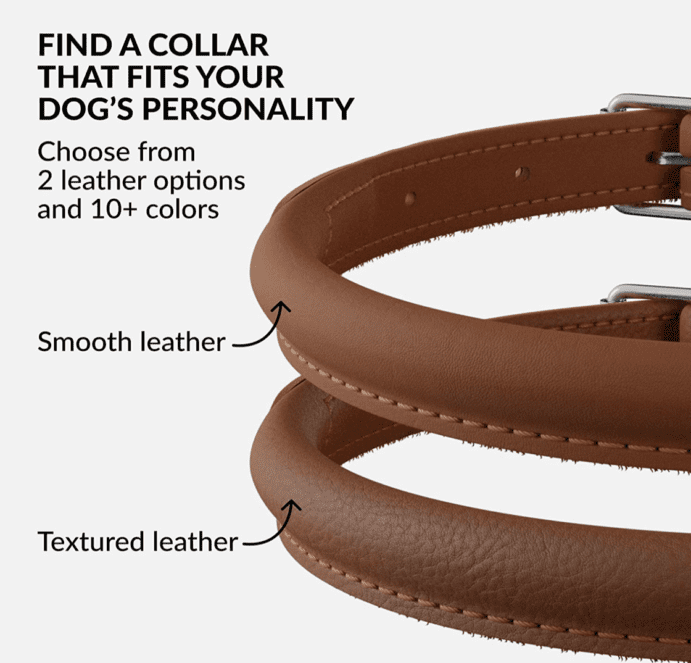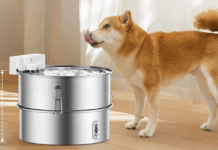Last Updated on April 18, 2023 by Dogs Vets
How to Clean Stinky Leather Dog Collars: A Comprehensive Guide
As a dog owner, you want the best for your furry friend. One of the most important accessories for your dog is their collar.
A leather dog collar is a popular choice due to its durability, comfort, and stylish appearance. However, over time, these collars can get dirty and develop an unpleasant odor.
In this guide, we will walk you through the process of cleaning a stinky leather dog collar to keep it looking and smelling fresh.
Why Leather Dog Collars Need Regular Cleaning
Leather dog collars are exposed to various elements, such as dirt, sweat, and your dog’s natural oils. These factors can cause the collar to develop a buildup of grime and bacteria, leading to unpleasant odors.
Regular cleaning is essential to maintain the collar’s quality, prolong its lifespan, and ensure your dog’s comfort and safety.
Materials You Need for Cleaning Leather Dog Collars
Before you start cleaning your dog’s leather collar, gather the following materials:
- A soft cloth or sponge
- Mild soap or saddle soap
- Water
- A bowl or basin
- Leather conditioner
- A soft-bristled brush (optional)
Step-by-Step Guide to Cleaning Leather Dog Collars
Follow these steps to clean your dog’s leather collar effectively:
- Remove the collar from your dog: Before cleaning, remove the collar from your dog to avoid discomfort and ensure a thorough cleaning.
- Wipe off visible dirt and debris: Using a soft cloth or sponge, gently wipe away any visible dirt and debris from the collar’s surface.
- Prepare a soapy solution: Mix a small amount of mild soap or saddle soap with water in a bowl or basin. The solution should be sudsy but not overly concentrated.
- Clean the collar with the soapy solution: Dip the cloth or sponge into the soapy solution, wring out excess water, and gently scrub the collar. Pay attention to areas with metal hardware, as these tend to accumulate more dirt and grime.
- Use a soft-bristled brush for stubborn stains: If the collar has stubborn stains or dirt buildup, use a soft-bristled brush to scrub the affected areas gently.
- Rinse the collar with clean water: After cleaning, rinse the collar thoroughly with clean water to remove any soap residue.
Drying and Conditioning the Leather Collar
Proper drying and conditioning are crucial to maintain the collar’s integrity and prevent damage. Follow these steps:
- Pat the collar dry: Use a clean, dry cloth to pat the collar dry, removing any excess water.
2. Air dry the collar: Lay the collar flat on a clean surface and allow it to air dry naturally. Avoid exposing the collar to direct sunlight or heat sources, as this can cause the leather to crack or warp.
- Apply a leather conditioner: Once the collar is completely dry, apply a leather conditioner to keep the material soft and supple. Follow the manufacturer’s instructions and use a clean cloth or sponge to apply the conditioner evenly.
Maintaining Your Dog’s Leather Collar
To keep your dog’s leather collar in top shape, follow these maintenance tips:
- Clean the collar regularly: Clean the collar every 2-3 months or whenever it starts to show signs of dirt or odor.
- Store the collar properly: When not in use, store the collar in a cool, dry place away from direct sunlight and heat sources.
- Inspect the collar for wear and tear: Regularly check the collar for signs of wear and tear, such as fraying, cracks, or damage to the hardware. Address any issues promptly to ensure your dog’s safety.
Common Mistakes to Avoid
When cleaning your dog’s leather collar, avoid these common mistakes:
- Using harsh chemicals: Avoid using bleach, ammonia, or other harsh chemicals, as they can damage the leather and cause it to deteriorate.
- Soaking the collar: Do not soak the collar in water or the cleaning solution, as this can cause the leather to stretch, warp, or lose its shape.
- Machine washing: Leather collars should not be machine washed, as this can cause damage to the leather and hardware.
Alternative Methods for Cleaning Leather Collars
If you prefer not to use soap and water, consider these alternative cleaning methods:
- Leather cleaning wipes: These pre-moistened wipes are designed to clean and condition leather surfaces. Use them to wipe down your dog’s collar, following the manufacturer’s instructions.
- White vinegar: Mix equal parts white vinegar and water to create a mild cleaning solution. Apply the solution to a clean cloth and gently wipe the collar. Rinse with a damp cloth and allow the collar to air dry.
When to Replace Your Dog’s Leather Collar
It’s essential to know when it’s time to replace your dog’s leather collar for their safety and comfort. Consider replacing the collar if:
- The leather is cracked, torn, or excessively worn: Damaged leather can cause discomfort and pose a safety risk.
- The hardware is damaged or corroded: Broken or corroded hardware can compromise your dog’s safety and make it difficult to attach a leash or ID tags.
- The collar no longer fits properly: If your dog has outgrown the collar or if it has stretched and no longer fits securely, it’s time to invest in a new one.
Conclusion
A clean and well-maintained leather dog collar not only looks and smells better but also ensures your dog’s comfort and safety.
Regular cleaning, proper storage, and routine inspection for wear and tear are crucial steps in maintaining the quality and longevity of your dog’s leather collar.
By following this comprehensive guide, you’ll keep your dog’s collar looking and smelling great for years to come.
Frequently Asked Questions (FAQs)
Q1: Can I use saddle soap on my dog’s leather collar?
A1: Yes, saddle soap is designed for cleaning and conditioning leather and is safe to use on your dog’s leather collar. Be sure to follow the manufacturer’s instructions and rinse the collar thoroughly after cleaning.
Q2: How often should I clean my dog’s leather collar?
A2: It’s recommended to clean your dog’s leather collar every 2-3 months or whenever it starts to show signs of dirt or odor. Regular cleaning helps maintain the collar’s quality and prolong its lifespan.
Q3: Can I use baby wipes to clean my dog’s leather collar?
A3: While baby wipes may be gentle enough for cleaning leather, they may not be as effective in removing dirt and grime as leather cleaning wipes or a soap and water solution. Additionally, baby wipes may not provide the necessary conditioning that leather requires.
Q4: Can I dry my dog’s leather collar with a hairdryer?
A4: It’s not recommended to use a hairdryer or any direct heat source to dry your dog’s leather collar, as this can cause the leather to crack or warp. Instead, allow the collar to air dry naturally, away from direct sunlight and heat sources.
Q5: How do I know if my dog’s leather collar is too tight or too loose?
A5: A properly fitting collar should allow you to fit two fingers comfortably between the collar and your dog’s neck. If you can’t fit two fingers or if the collar is so loose that it easily slides over your dog’s head, it’s time to adjust or replace the collar.
Q6: Can I use coconut oil to condition my dog’s leather collar?
A6: While some dog owners have reported success in using coconut oil to condition leather, it’s best to use a product specifically designed for leather care, such as a commercial leather conditioner. This will ensure optimal results and prevent any potential damage to the leather.
Q7: How can I prevent my dog’s leather collar from becoming stinky?
A7: Regular cleaning and maintenance are key to preventing odors in your dog’s leather collar. Additionally, ensure that the collar dries completely after exposure to water or moisture, as dampness can contribute to the development of unpleasant smells.
Fact Check
We hope you enjoyed reading this article. What are your thoughts on the topic?
“At [Dogsvets.com], our goal is to bring you the most accurate and up-to-date information on all things pet-related.
If you have any additional insights or would like to advertise with us, don’t hesitate to get in touch.
If you notice any errors or discrepancies in our content, please let us know so we can correct them.
We welcome your feedback and encourage you to share this article with others.”



















